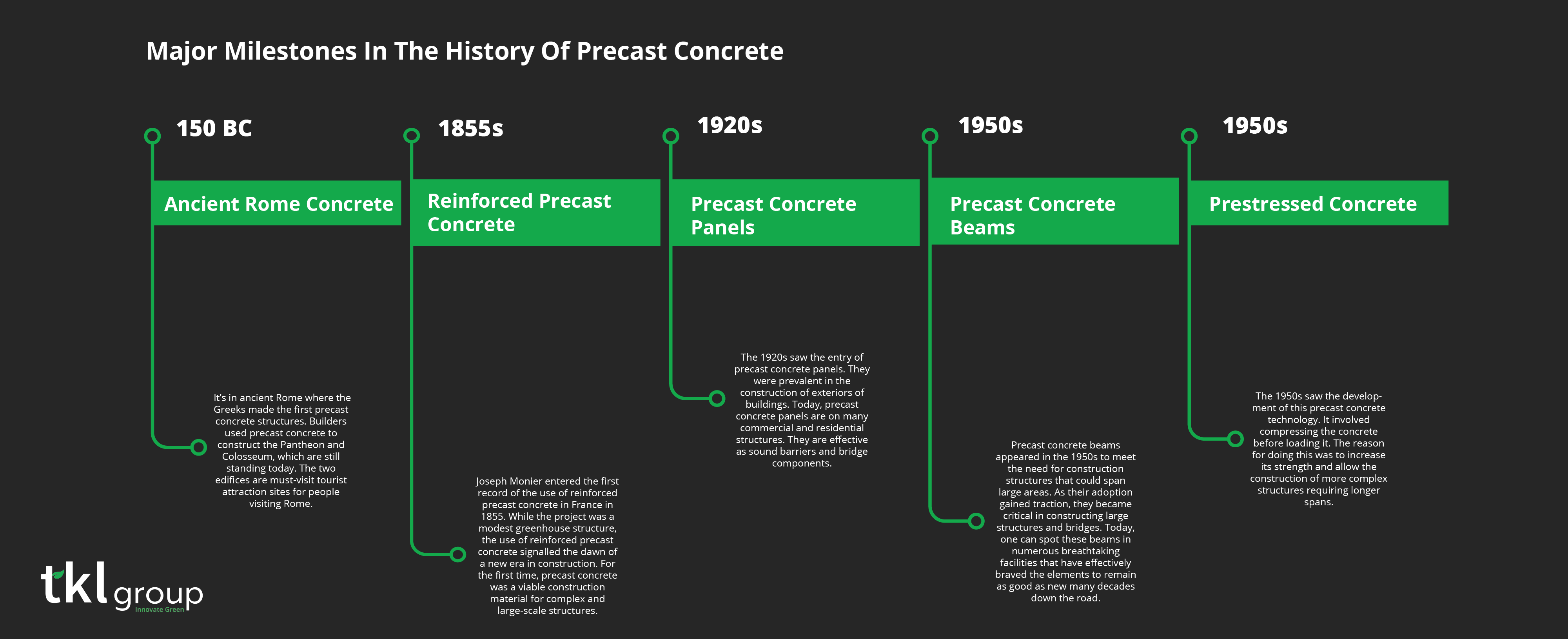The last century has witnessed significant milestones in the precast concrete construction sector. More developers are increasingly adopting this construction material in their projects, informed mainly by its numerous advantages, which include enhanced durability, improved quality control, reduced construction time, and sustainability.
One of the reasons precast concrete has gained such traction is the element of design and engineering behind it. These have made it possible to create and sometimes recreate structures that are almost impossible to pull off with traditional building materials. Below are 12 reasons why design and engineering are critical in precast concrete construction.
1. Quality Control
Quality control is critical for a construction project. Buildings that use precast concrete enjoy higher quality control as the materials are manufactured in controlled factory conditions. A well-designed precast concrete is carefully manufactured using precision tolerances to ensure it fits with other components without needing patching or grouting. The goal is to ensure that precast elements meet the specifications.
2. Accurate Design
When designing precast concrete structures, design accuracy is critical for various reasons. First, it ensures that a facility meets performance requirements, such as service life, durability, and load-bearing capacity. Secondly, an accurate design translates into reduced costs and optimization of material usage.
Thirdly, an accurate design simplifies the assembly and installation of precast concrete elements. The components are manufactured off-site and transported to a construction site, where professionals install them. An accurate design eliminates or minimizes the need for installation site modifications, saving you money and time.
Fourthly, an accurate design enhances constructability and improves quality control. Lastly, the designs ensure standardization and consistency. Since precast concrete elements are manufactured off-site in controlled settings, every component adheres to the same high-quality standard.
3. Optimized Material Usage
One of the disadvantages of precast concrete construction is that it uses more concrete than the traditional cast-in-place construction method. However, by adopting good design and engineering practices, you can optimize material usage, save costs, and reduce the amount of concrete required. You can use high-strength concrete, thinner precast components, or optimize the reinforcing steel to minimize the structure’s weight.
4. Constructability
Precast concrete’s benefits include better quality control, increased construction efficiency, and reduced construction time. Proper engineering and design practices can enhance your project’s constructability. For this to happen, one must clearly and exhaustively document installation procedures. Each precast component must be designed with ease of installation to minimize rework and the risk of delays.
5. Simplified Assembly
Since precast components are produced off-site and later transported to the construction site for installation, their design and engineering must facilitate ease of assembly to keep on-site modifications to a minimum, ultimately saving you money and time.
6. Improved Durability
The manufacture of precast concrete in controlled conditions further enhances its durability. Besides, sound engineering and design practices ensure precast components are designed to withstand the vagaries of the weather and the loads they’ll be required to carry. The result is a reduced risk of failure, which translates into a long service life.
7. Cost Savings
Sound engineering and design practices result in significant cost savings. You can reduce the overall cost of your precast concrete project by optimizing material usage, simplifying assembly, reducing the amount of concrete required, and enhancing constructability.
8. Standardization and Consistency
Every precast concrete component is produced at identical high-quality standards. From a controlled factory environment to sound engineering and design practices, you can expect every precast element to be of the same standard, ensuring consistency and minimizing failure risk.
9. Sustainability
Sound design and engineering practices benefit from energy efficiency, lower transportation costs, reduced construction waste, and lower transportation emissions. Using sustainable materials enhances these benefits further, reducing the amount of concrete required. Other factors that improve sustainability are precast components designed to allow easy assembly and reduce the need for transportation and on-site modifications.
10. Safety
Safety is a critical consideration in a construction site. However, by adopting sound engineering and design practices, you can ensure the safety of both your workers and the general public. On the other hand, using poorly engineered precast concrete components puts your project at a higher risk of failure and can endanger your workers’ safety.
A sound precast concrete construction requires careful planning and execution. To stand the test of time across different vagaries of the weather, one has to do everything according to specifications. Don’t take shortcuts, especially in design and engineering, which are critical considerations in a precast concrete construction project.
When employed appropriately, design and engineering ensure that precast components meet the performance requirements, are manufactured to the required specifications, and allow easy assembly and installation. Adopting proper design and engineering practices can enhance constructability, reduce costs, optimize material usage, and improve environmental and safety benefits.
Consult TKL Group for award-winning designs for your next precast concrete construction project.

